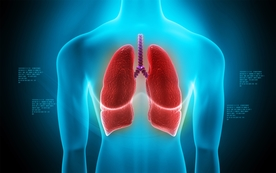Lung Conditions: Pneumothorax, Pulmonary Embolism, and Occupational Lung Diseases
Lung diseases limit the lungs’ ability to take in oxygen and expel carbon dioxide. This article focuses on three important categories: pneumothorax (collapsed lung), pulmonary embolism (PE), and occupational lung diseases such as asbestosis, silicosis, and coal workers’ pneumoconiosis.
This guide is for general education and not a substitute for professional medical care. Seek emergency help for severe or worsening symptoms.
Pneumothorax (Collapsed Lung)
What it is
Pneumothorax occurs when air leaks into the pleural space (between the lung and chest wall), compressing the lung and reducing its ability to inflate. It may follow chest trauma, medical procedures, lung disease (e.g., COPD/emphysema), or occur spontaneously in otherwise healthy individuals.
Symptoms
- Sudden sharp chest pain, often one‑sided
- Shortness of breath, rapid breathing
- Sometimes shoulder or back pain; in severe cases, bluish lips/skin (cyanosis), fatigue, dizziness
What to do now (first aid)
- Call emergency services for severe chest pain or breathing difficulty, especially after chest injury.
- Rest, minimize movement; keep the person upright if comfortable.
- For a penetrating chest wound, cover with a clean dressing taped on three sides (vented) to reduce air entry while allowing air to escape. Do not seal on all four sides.
Diagnosis and treatment
- Exam plus chest imaging (X‑ray or CT); ultrasound may be used in emergencies.
- Small, stable pneumothoraces may resolve with observation and oxygen.
- Larger or symptomatic cases need needle aspiration or chest tube (tube thoracostomy).
- Tension pneumothorax is a life‑threatening emergency requiring immediate needle decompression followed by chest tube.
Pulmonary Embolism (PE)
What it is
A PE occurs when a blood clot—usually from deep veins of the legs or pelvis—travels to the lungs and blocks a pulmonary artery, impairing oxygen exchange. It is potentially life‑threatening.
Symptoms
- Sudden shortness of breath; chest pain that may worsen with deep breaths
- Rapid heart rate, lightheadedness, anxiety
- Cough, sometimes with blood‑tinged sputum
- Leg pain or swelling (signs of deep vein thrombosis)
What to do now (first aid)
- Call emergency services immediately if PE is suspected.
- Keep the person at rest; do not massage or vigorously move a painful/swollen leg.
Diagnosis and treatment
- D‑dimer testing and clinical risk scoring; CT pulmonary angiography (or V/Q scan when indicated) confirm diagnosis; ultrasound for DVT.
- Anticoagulation (blood thinners) is the mainstay of treatment.
- Selected cases: thrombolysis (clot‑busting medicine) or catheter‑directed therapy; surgery for massive PE.
- Oxygen and hemodynamic support as needed.
Prevention
- Early mobilization after surgery/illness; leg exercises during long travel
- Compression stockings or pharmacologic prophylaxis when indicated
- Manage risk factors: smoking cessation, weight management, control of estrogen therapy as appropriate
Occupational Lung Diseases
Asbestosis (and asbestos‑related disease)
- Cause: Inhalation of asbestos fibers leading to pulmonary fibrosis; risk of pleural plaques, lung cancer, and mesothelioma increases, especially with smoking.
- Symptoms: Gradual onset shortness of breath, dry cough, reduced exercise tolerance; may appear years after exposure.
- Management: Eliminate exposure; smoking cessation; vaccinations (influenza, pneumococcal); inhaled therapies if coexisting airway disease; pulmonary rehabilitation; oxygen for advanced disease; surveillance for complications.
Silicosis
- Cause: Inhalation of crystalline silica (mining, stone cutting, sandblasting, construction).
- Features: Chronic cough, shortness of breath; increased risk of tuberculosis and autoimmune disease; progressive massive fibrosis in severe cases.
- Management: Exposure control, supportive care, vaccination, TB screening per local protocols; consider specialist referral.
Coal Workers’ Pneumoconiosis (CWP)
- Cause: Inhalation of coal dust; may progress to complicated CWP with significant scarring.
- Symptoms: Chronic cough, exertional breathlessness; may overlap with COPD.
- Management: Exposure reduction, supportive therapy, pulmonary rehab; manage comorbidities (e.g., COPD, cardiovascular disease).
Shared points for occupational diseases
- Latency can be long—symptoms may appear years after exposure.
- No curative medication for established fibrosis; focus is on prevention, symptom control, and complication surveillance.
- Workplace controls: engineering controls, wet methods, local exhaust ventilation, enclosure, and appropriate respiratory protection.
- Smoking cessation significantly reduces cancer risk and improves outcomes.
When to Seek Urgent Care
- Severe or worsening shortness of breath, chest pain, fainting, blue lips/skin
- Coughing up blood
- Sudden swelling/pain in one leg with breathing symptoms
- After chest trauma with breathing difficulty
Protecting Your Lungs
- Don’t smoke or vape; avoid secondhand smoke.
- Keep vaccinations current (influenza, COVID‑19, pneumococcal when indicated).
- Use proper protective equipment at work; follow occupational safety standards.
- Stay active, maintain a healthy weight, and manage blood pressure, cholesterol, and diabetes.
This article is for general information. For symptoms or exposure concerns, consult a healthcare professional and follow local emergency guidance.







